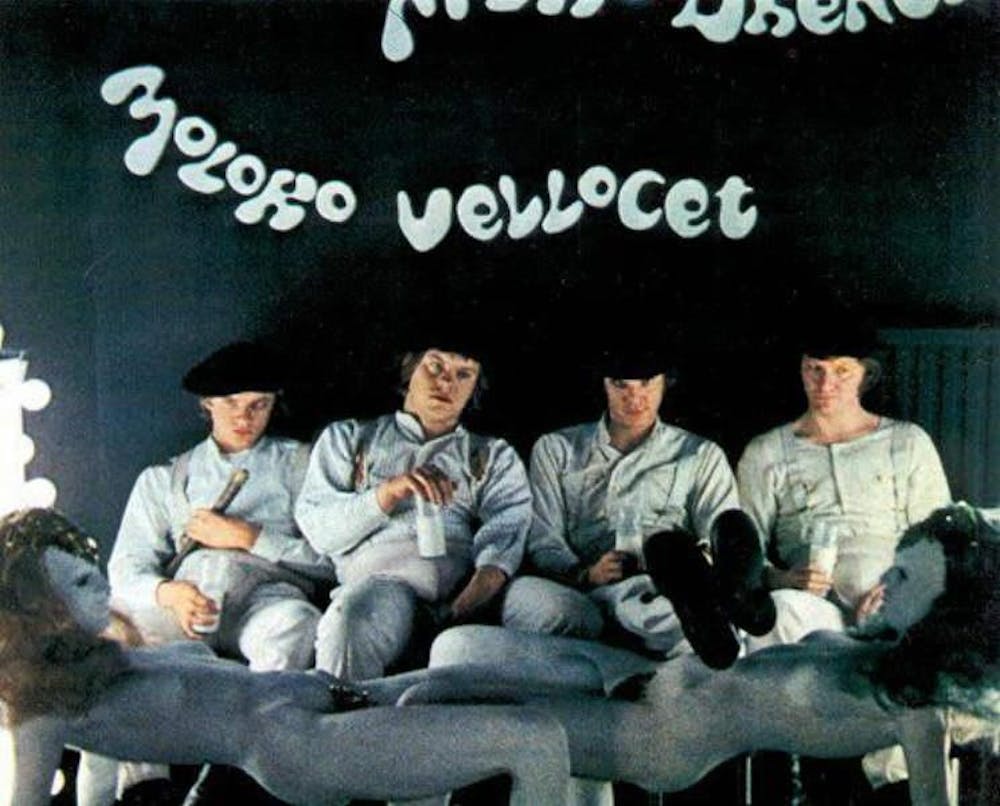A look inside the IU Cinema on Saturday night may have convinced you that cult film is alive and well.
A sold-out audience sat in rapt attention viewing Stanley Kubrick’s Orwellian mind-bender “A Clockwork Orange.” At the first-ever midnight showing at the IU Cinema, this audience had perhaps never seen a film not only as lavish, colorful and alive in cinematic spectacle but also as ironically sadistic.
This is a polite way of saying there is no director alive today like Stanley Kubrick and no cult film that represents what his films once did.
The definition of the cult film has changed along with the industry. For a movie to have achieved cult status in 1971 when “A Clockwork Orange” was released, it needed to build its fan base almost exclusively through midnight shows. Controversial art films like Kubrick’s X-rated masterpiece were quickly pulled from first-run theaters and received the most attention on college campuses.
Movies such as “A Clockwork Orange,” “Easy Rider,” “Midnight Cowboy,” “2001: A Space Odyssey” and, some years later, “Apocalypse Now,” “Heavy Metal,” “Night of the Living Dead” and, most notably, “The Rocky Horror Picture Show,” were the only options week after week. They gained popularity slowly as buzz between those who had never seen a cult film and those who had seen one a dozen times built up.
Yet with the ease of Netflix and cable TV, there’s no film you won’t be able to find, and there are no droves of teenagers gathering on a weekly basis to watch any one film.
Today, a cult film is characterized by its rabid fan base online, not necessarily an extreme loyalty to it.
In fact, it’s very easy to generate a cult following today by simply marketing a movie to a niche audience through Internet ads and red band trailers.
Comic book- or graphic novel-based movies are a good example. Films such as “Kick-Ass,” “Watchmen” and “Scott Pilgrim vs. the World” are already tailored to a specific audience. When one such movie underperforms at the box office or critical acclaim doesn’t match the hype generated, the core fan base leaps to defend it on IMDB message boards, and cult status is granted.
The same is true of TV shows, a factor uncommon to the ’70s cult films I’m alluding to. Shows such as “Community,” “Louie,” “Wilfred” and other shows on F/X or Adult Swim have arguably achieved cult status from their premieres. And a cult show now is not necessarily one that is edgy or different but one that has an unfortunately brief shelf life.
I don’t think I need to mention how many times we’ve Netflixed “Firefly,” “Arrested Development” and “Freaks and Geeks” to make my point.
Our only exceptions to the rule are notoriously bad films such as “The Room” and “Troll 2” or Asian horror movies such as “Audition” and “Oldboy.”
These examples do not fall into the category cult films used to: exotic, trippy, excessive, mainstream cinema art that represented a dramatic shift from Old Hollywood to the new.
Movies like “A Clockwork Orange” fostered a counterculture in audiences and filmmakers alike. They were radical, ambitious films that shared more in common with the French New Wave than Hollywood blockbuster fare. Filmmakers craved to tell different stories, and audiences demanded to see them.
Today we celebrate when a cult becomes as large as the one for “Inception,” and our response leads Hollywood to make more action blockbusters like it.
A cult is supposed to subvert the established culture, not embrace it.
Drinking the cult film Kool-Aid

Get stories like this in your inbox
Subscribe





